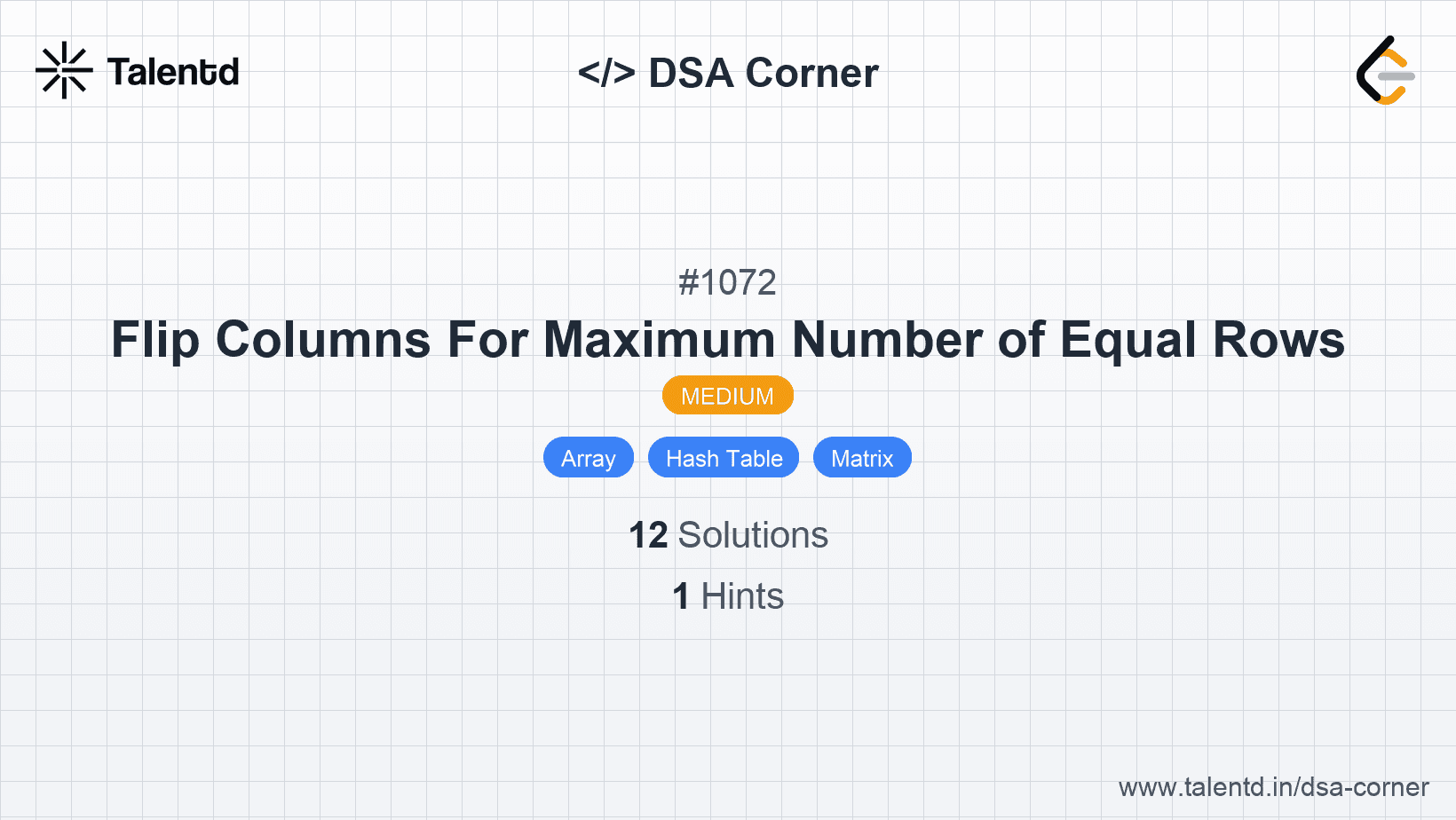
Sponsored
Sponsored
By considering identical or opposite binary patterns within rows, the task reduces to finding the maximum similar pattern. If row 'A' can be made equal to row 'B', they must have the same or opposite pattern for all columns.
Time Complexity: O(m * m * n) where m is the number of rows and n is the number of columns. Space Complexity: O(n) for the transformation key.
1import java.util.HashMap;
2
3public class MaxEqualRows {
4 public int maxEqualRowsAfterFlips(int[][] matrix) {
5 HashMap<String, Integer> patternCount = new HashMap<>();
6 for (int[] row : matrix) {
7 StringBuilder sb = new StringBuilder();
8 for (int val : row) {
9 sb.append(val == row[0] ? '0' : '1');
10 }
11 String pattern = sb.toString();
12 patternCount.put(pattern, patternCount.getOrDefault(pattern, 0) + 1);
13 }
14 int maxEqualRows = 0;
15 for (int count : patternCount.values()) {
16 maxEqualRows = Math.max(maxEqualRows, count);
17 }
18 return maxEqualRows;
19 }
20}A StringBuilder concatenates a boolean representation of each row relative to its lead value. HashMap is then used to count occurrences of each pattern.
This alternative method evaluates each row by considering both its native and entirely flipped transformations, tallying frequency counts using these dual patterns in order to discover the maximal frequency count of equivalent rows.
Time Complexity: O(m * n), Space Complexity: Usage is reduced because of the hash bucket with a distant hash-field.
Generates both direct and inverted string representations for each row entry and updates map frequency thereby. Efficient yet diverse string relations imply dynamic pattern focus operation applicable for JavaScript execution.